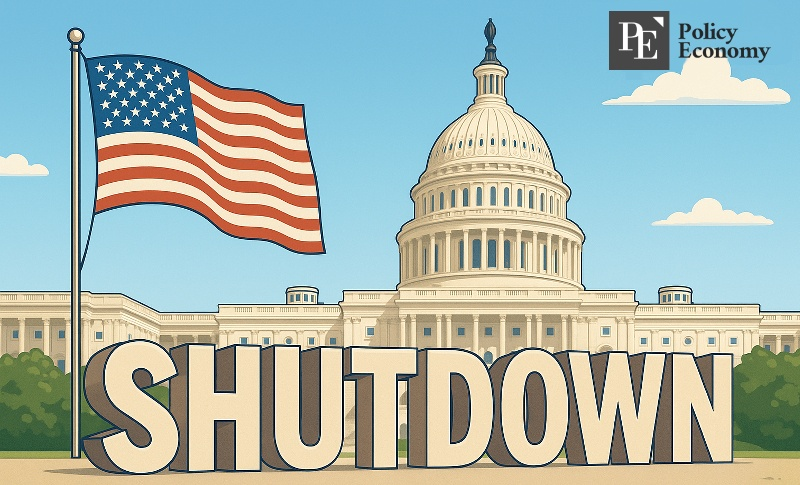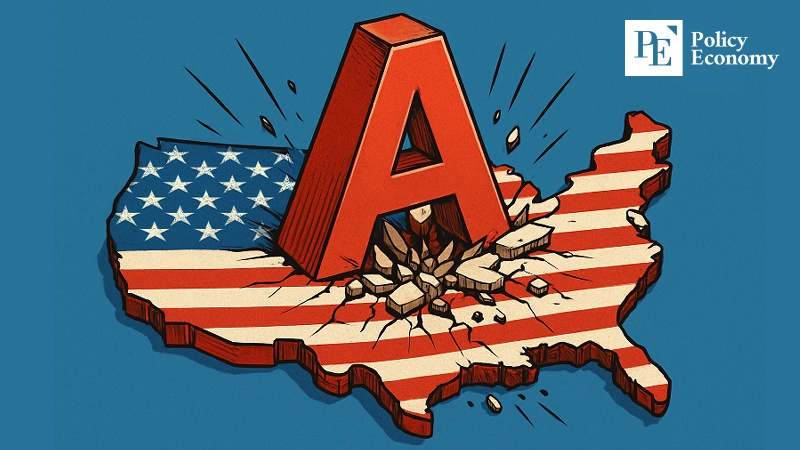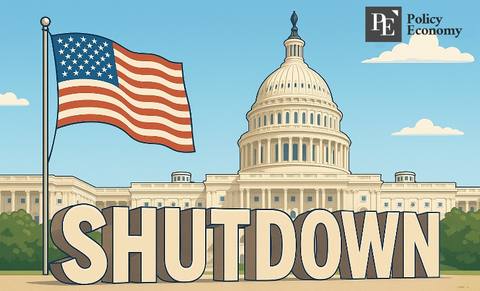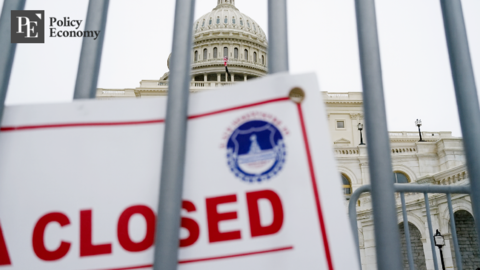U.S. Government Shuts Down Amid Trump-Democrats Standoff; Prolonged Deadlock Could Trigger Financial and Social Shockwaves
Input
Modified
Shutdown deepens gaps in public services
Interest rate cuts possible as markets face uncertainty
Political confrontation intensifies public opinion battle

The U.S. federal government has entered a shutdown for the first time in seven years. While markets have so far reacted with relative calm to the immediate shock, concerns are mounting that if the stalemate extends beyond two weeks, the combination of labor market disruptions and financial instability could have significant repercussions. President Donald Trump has pinned the blame on Democrats, escalating a public opinion war, while Democrats have fired back, showing no signs of compromise. With political calculations overriding negotiations, the likelihood of a prolonged shutdown is rising.
Mounting Public Frustration, Uneasy Social and Market Atmosphere
As of October 1, the central question gripping Washington, Wall Street, and society at large is how long the shutdown will last. Adam Crisafulli of Vital Knowledge told CNBC, “Markets had already anticipated a shutdown, so for now they remain in a wait-and-see mode,” but added, “If this drags beyond two weeks, uncertainty will mount.” Bank of America (BofA) noted that since 1990, shutdowns have lasted an average of 14 days, warning that a drawn-out episode would inevitably leave scars.
Tobias Markus of Wolfe Research predicted, “This crisis is likely to last more than a week, but not as long as the 2013 shutdown.” Still, he cautioned that delays in key data releases, such as employment reports, could disrupt policymaking: “If the shutdown drags on, the collection of economic data and the basis for policy decisions will inevitably be undermined.” The September jobs report may already be postponed, along with other social and economic statistics, potentially weakening the government’s policymaking foundation if the impasse endures.
The shutdown began after Congress failed to pass either a fiscal 2026 budget or a stopgap measure by midnight on September 30. In the Senate, a seven-week continuing resolution introduced by Republicans fell 55-45, short of the 60 votes required. As a result, the federal government shut down for the first time since December 2018. Non-essential workers have been furloughed without pay, while essential staff are required to work without compensation. With administrative paralysis now a reality, public frustration and inconvenience are mounting quickly.
Barclays warned that while “it is possible the two parties come to their senses and reach a deal quickly,” the risk of a prolonged shutdown, like the 34-day episode of 2018–2019, cannot be ruled out. The uncertainty deepened when the Trump administration floated the possibility of mass federal layoffs, which experts say could have long-term economic and social consequences well beyond a budget dispute. “Unlike in the past, structural ripple effects could amplify, leaving investors and companies little choice but to remain cautious,” analysts said.
Potential Market Fallout: Could Monetary Policy Ease?
The Congressional Budget Office (CBO) estimated that for each day of a government shutdown, 750,000 workers would be furloughed, with compensation losses totaling USD 400 million. In past shutdowns, workers were repaid once back on the job, but President Trump has announced plans to review the entire federal payroll system, raising the possibility that some furloughs could become permanent layoffs. Such a move would deliver another blow to an already fragile labor market. According to ADP, U.S. private employment fell by 32,000 in September compared with the previous month.
As a result, markets are increasingly convinced the Federal Reserve will cut rates at its October 28–29 FOMC meeting. If the shutdown persists, policymakers are expected to prioritize recession risks over inflation concerns. Krishna Guha, head of global policy and central bank strategy at Evercore ISI, wrote in a client note: “The shutdown and resulting data delays reinforce the case for an October rate cut, already seen as highly likely. Shutdown-related disruption and labor market weakness will outweigh inflation concerns.”
BofA argued that based on past experience, “the shutdown will likely end before the October 28–29 FOMC meeting, allowing the Fed to use updated data.” But if the standoff extends into the meeting, it said, there are two reasons the Fed could cut. Economist Stephen Juneau explained: “First, the September jobs report would need to be strong to justify holding rates steady in October. If the report isn’t released, Chair Powell may push for a cut under ‘risk management.’”
“Second,” he added, “if federal workers are laid off, the Fed would have no choice but to cut rates to offset downside risks from a prolonged shutdown.” At the September meeting, seven of 19 FOMC members already favored two rate cuts by year-end. While some warned tariffs could lift inflation, most judged the impact temporary and expected inflation to gradually converge toward the 2 percent target under a path of measured easing.

Confrontation Over Compromise: Signs of a Prolonged Deadlock
President Trump has sought to shift blame squarely onto Democrats, stoking the public battle. On September 30, as the budget deadline expired, he told reporters at the White House, “Democrats want a shutdown. If there is a shutdown, there will be many layoffs.” He added, “No country can afford to provide health care benefits for illegal immigrants and everyone coming into this country. But Democrats are demanding just that.” Democrats, in turn, rejected the Republican seven-week stopgap, pushing instead for continued subsidies under the Affordable Care Act.
Trump insisted, “We (Republicans) really don’t want a shutdown. But if we can eliminate something through a shutdown, it will be the initiatives Democrats are pushing.” He went on to say, “Democrats want open borders. They want men competing in women’s sports, they want transgender rights for all. They will never stop.” The Office of Management and Budget earlier indicated that during a shutdown, staffing cuts would target departments misaligned with the administration’s policy priorities.
Democrats countered forcefully. Senate Majority Leader Chuck Schumer said, “Neither we nor the American people want a shutdown,” adding, “Even with a shutdown imminent, the president is acting like a 10-year-old fooling around on the internet.” He was referring to Trump’s post the previous day on Truth Social, where an AI-generated video appeared to show Schumer and House Minority Leader Hakeem Jeffries. In the clip, Schumer purportedly expressed Democratic support for illegal immigrants, though he later clarified the video was fake.





















Comment